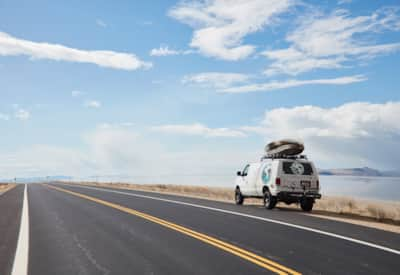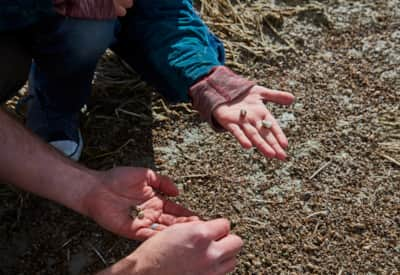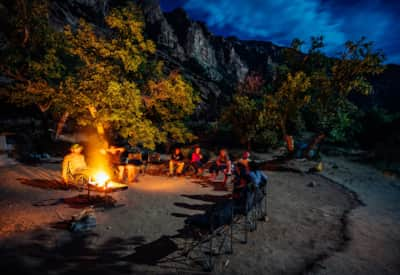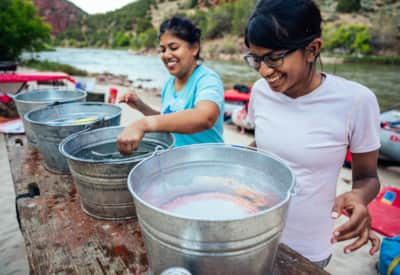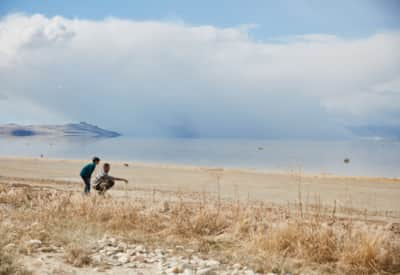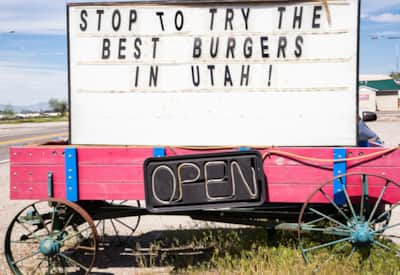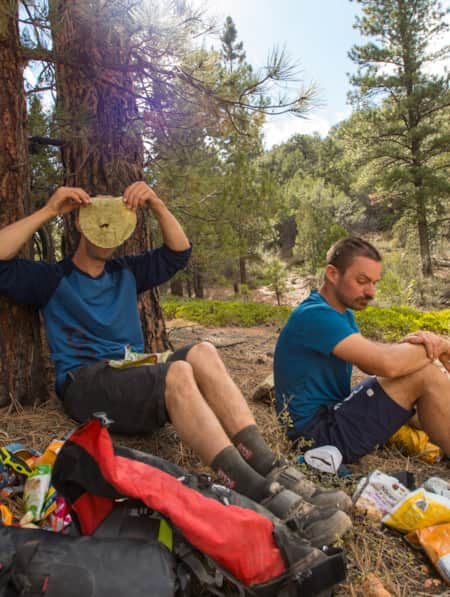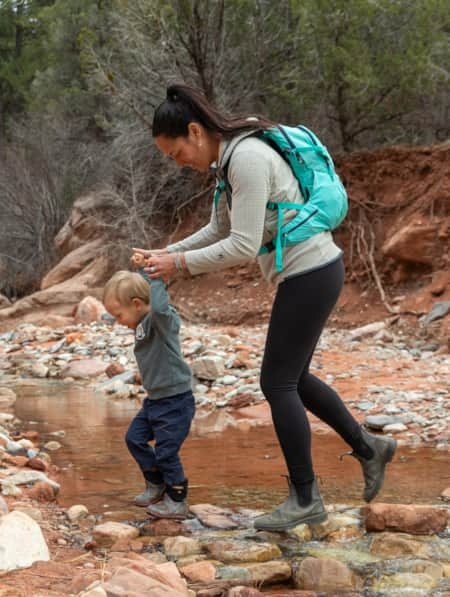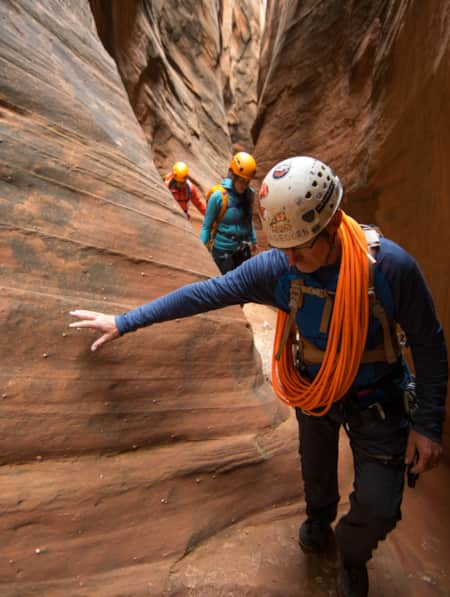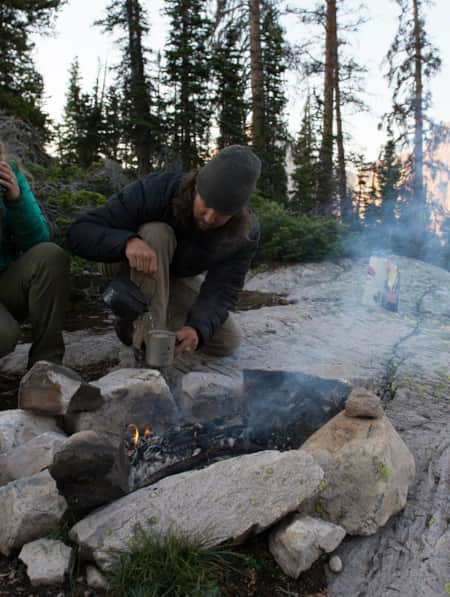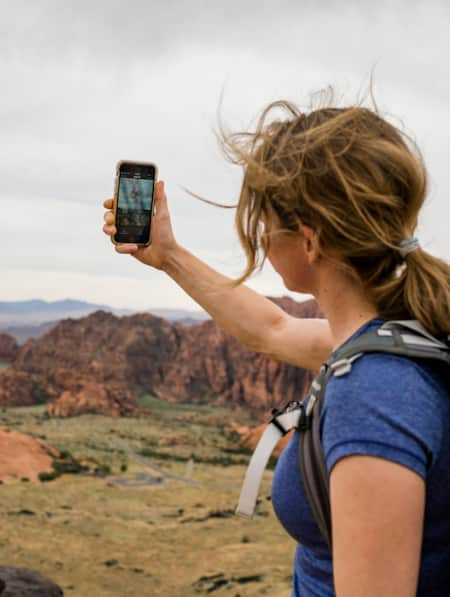How to Slow Travel in Utah
Avoid the mad scramble and consider slow travel as a better approach to your Utah trip.
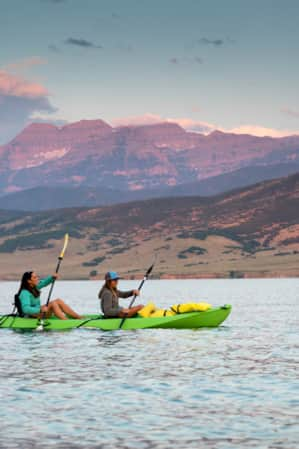
After graduating high school, I booked a trip to Europe where I saw five countries in 10 days. Overwhelmed with anticipation, I hopped on a plane to London, but soon my excitement faded. I was so busy scrambling to get from Point A to Point B, I regrettably missed a lot.
When I returned to the states and was asked about Europe, what I recalled mostly was a blur of hotels and train rides. My once-of-a-lifetime (I still haven’t gone back) European trip was mentally and physically exhausting. Instead of filling me with memorable experiences, I was left disappointed I hadn’t visited one or two countries, taken it slow, and savored what each country had to offer.
When you visit Utah, you shouldn’t leave feeling the way I did after visiting Europe. To help you get the most out of your visit, I caught up with interesting Utahns, who by the nature of their work have traveled extensively throughout the state and beyond. They’re on the road constantly, and have some great tips on making the most out of week-long trips.
See the complete check list of advice from frequent travelers.
Set an Intention
Lauren Wood is the trip director at Holiday River Expeditions, a company her grandparents started in 1966. Wood grew up on the banks of Utah rivers, and she loves how sections of the Green River wind through pristine dark sky areas over Utah’s Colorado Plateau. When the moon is new and there’s no moonlight, visitors can see the most amazing stars. “You feel this sense of bigness all around you, especially at night,” she says.
"When I’m in the wilderness, I find myself thinking, ‘Why am I here? What do I want to get out of this experience?"
Wood says it takes time for people to unwind from their busy, interconnected lives. She suggests that travelers go into their trip with intention by contemplating why they’re taking time for themselves, advice she personally follows.
Before Wood leaves on a trip, she thinks about what’s making her want to leave her home in the city. “When I’m in the wilderness, I find myself thinking, ‘Why am I here? What do I want to get out of this experience?’” And she always packs a journal.
“One of the nice things on a river trip is there is no Wi-Fi or cell phone coverage,” she says, which is why she advises travelers to tie up loose ends before they leave home, such as putting an out-of-office alert on your email, and letting friends know you’re going out of town. That allows you to truly let go, she says.
Whether Wood’s going on a river trip as a guide or taking her family to the backcountry, she utilizes Holiday’s backpacking list. Another tool she recommends is “The Complete Guide to Whitewater Rafting Trips in Utah.”
Create an Intimate Connection
Drew Petersen, a professional skier and Salomon athlete, lives in Salt Lake City but travels often, including a memorable trip to the mountains of Kyrgyzstan, a country bordered by Tajikistan and China. While he’d love to ski the fjords of Norway one day, Utah holds a special place in his heart. “I call this home for a reason,” Petersen says.
Wherever he travels, he tries to develop ties to his destinations. “I find when I develop a personal connection, the trip holds more value, especially to hold on to the long-term memories as to why I’ve developed a connection to that place,” he says. On ski trips, he says, “the more time I get to spend in a place, I get to understand what makes those mountains so special.”
When planning a trip, Petersen tries to limit arrangements to the core of what he needs, which helps him travel with an open mind. “I like to go into a place without preconceived expectations or following an itinerary,” he says, instead going with the flow to find out what a place has in store for him.
Adam Barker, a lifestyle and outdoor photographer, has traveled everywhere from Antarctica to Asia. At home in Utah, he spends a lot of time recreating with his three sons in the Wasatch Back, the area east of Salt Lake City that includes Park City and the Heber Valley. Some of his favorite Utah places include Lake Powell, the Wasatch Front, the middle Provo River, Calf Creek Falls and Moab.
"I like to go into a place without preconceived expectations or following an itinerary and instead, going with the flow to find out what a place has in store for me."
Mount Timpanogos, which towers over Utah Valley, is one of Barker’s favorite places to shoot sunrise photographs. “People ask me all the time, ‘What’s your favorite place to shoot?’ and it truly is coming home,” Barker says. “I love Utah. I’ve lived here my entire life, even though I’ve traveled throughout the entire world.”
Barker recalls one trip when he and his wife took their three boys and their pop-up camper to Capitol Reef National Park. He remembers a beautiful cold day during spring break. The family took a hike that at several points required them to scramble up rocks before they arrived at a spot with a natural slide into a pool. “I have such a vivid memory of them sliding down the slide, it was such a moment,” Barker says.
Plan, Then Go With the Flow
Barker always checks the weather when he’s traveling. “I’m a total gear junky, so my thing is there’s no such thing as bad weather, but bad vacationers, hikers, or skiers,” he says. If travelers are prepared for wind, cold, snow and heat, they can have a great time in any weather.
He advises travelers to be adaptable, open and prepared. Having a Plan B is a great way to make a trip more memorable, he says.
Austen Diamond is a commercial and editorial photographer (Read: Desert Shutter Speed) who moved to Utah more than a decade ago to work as a wilderness guide. When he first arrived, it was dark, but when he woke up the next morning, he was “blown away” by his view of the Wasatch Mountains. He’s since traversed across Utah, but recalls hiking King’s Peak as one trip that will stay with him forever.
“As a guide, I was accustomed to the geography of high alpine forests but not to this epic level,” he says. “The challenges and rewards that the trip afforded made it the pinnacle of my Uinta experience during that time.”
As a traveler, he feels most connected and fulfilled when he can view his surroundings not as a tourist, but as a cultural anthropologist. Here’s how he explains the difference:
“Imagine you're in one part of the Grand Staircase — say Boulder, Utah — where the sandstone is yellow, almost white, and you explore around and over the otherworldly, ancient formations.
"If travelers are prepared for wind, cold, snow and heat, they can have a great time in any weather."
“You visit a heritage site, such as Anasazi State Park Museum. You exchange stories with an owner of a bed and breakfast. And you enjoy the food that's grown at local farms and delightfully prepared in the area, all of the activities done slowly and over a few days or a week. Now, you know the place, its community and geography in an intimate way,” Diamond says.
When visiting an urban center, Diamond sees if there’s an interesting event, such as a local fundraiser or concert, that will allow him to be in the community. He also visits the local ranger stations or Bureau of Land Management office. “It’s a wonderful thing to create room for spontaneity within the context of a trip, to allow serendipity and the unexpected to come,” he says.
Maintain a Sense of Flexibility
Lexi Dowdall is a fifth-generation Utahn of pioneering and ski-bumming stock. She’s director of Freeride for the nonprofit International Freeskiers & Snowboarders Association (IFSA), the governing body for competitive Freeride skiing and snowboard events in North and South America. She’s also a contributing blogger for Ski Utah.
Dowdall recently traveled to Kappl, Austria, for the Freeride Junior World Championship, as well as Australia and Canada. Locally, Dowdall is partial to Little Cottonwood Canyon, having grown up skiing the slopes of Snowbird. “My partner works on Ski Patrol at Alta and I’m often on the slopes enjoying the greatest snow on Earth at either Alta or Snowbird,” Dowdall says.
Dowdall loves fleeing summer heat in the turquoise waters of Bear Lake State Park. Her grandpa often took her and her sister up into the Uintas to go fishing. In quieter months like May or October, she takes her paddleboard and launches from the marina at Antelope Island State Park, where “the sunsets are ethereal!” she says.
When she was a child, Goblin Valley State Park was the most magical place she had ever seen. She recalls a memorable game of hide and seek among the hoodoos, pretending the rock formations were aliens.
On road trips, Dowdall enjoys camping or using home-share rental properties. She appreciates hosts who leave recommendations for local sights and food choices for their guests.
For a trip floating the Gates of Lodore on the Green River, Dowdall had prepared by researching the region’s history and landscape. “As I was floating, it was rewarding to recognize the landmarks I had read about and my understanding of the rich geology made my journey that much more meaningful,” she says. (Watch: Rafting the Gates of Lodore)
Adam Clark, who is based in Salt Lake City, is the senior photographer at POWDER magazine. He says he loves hopping on Google Maps, finding a place he hasn’t been, doing research online, and then spending a weekend exploring the area with friends.
For close-to-home trips, he likes to explore the West Desert (Read: Forgotten History and Wild Horses in the Heart of the West Desert), drawn by beautiful views of the Stansbury Mountains. For longer weekends, he escapes to the San Rafael Swell. (Read: San Rafael Swell Throughout the Seasons).
Clark travels with his girlfriend, Anastasia, and his French bulldog, Theo. They like to stock their van with good food, and then take off to explore someplace they haven’t been. They camp and cook most of their own food, but also make a point of visiting nearby towns to try out local restaurants or coffee shops.
Before traveling, Clark researches by reading blogs, travel articles and social media to draw up his own lists of spots he thinks would make for good adventures or photos. “And always have plenty of water,” he advises. “Sometimes you want to spend more time than you expected to explore something.”
Discovering Places on Your Own
Steve Howe is the owner and head guide at Redrock Adventure Guides, and a former longtime field editor at Backpacker Magazine. After traveling all over the world on assignment, he knows what it’s like to rush a trip.
His team would shoot a half-hour or one-hour show, which meant six days on the ground, shooting everything in a rush. He might as well have read about Switzerland or Tasmania or other places online, he says. Those assignments were mostly useful to him personally as scouting trips, because he never had the time to experience the place as a traveler.
"Where it’s convoluted, it usually translates to beautiful scenery. As long as travelers will turn around and memorize how to reverse course, there are great adventures to be found in the side explorations along the way."
He advises visitors to park their vehicles, turn off the keys, then get out and walk around. The places they discover on their own will mean more than stops checked off a list. “You’ve got to leave the road shoulder before you see what you preconceived, the fantasy terrain,” Howe says. “It can be a short stroll or a couple of hundred yards.”
Howe recommends picking up the DeLorme® Atlas & Gazetteer, a state-by-state recreational guide and map. Then he advises learning to read maps as well as the terrain. “Where it’s convoluted, it usually translates to beautiful scenery,” he says. As long as travelers will turn around and memorize how to reverse course, Howe says, there are great adventures to be found in the side explorations along the way.
Sustainable Travel Habits Help Local Communities
Jennifer Leaver, a senior research analyst focused on tourism at the Kem C. Gardner Policy Institute at the University of Utah, says that visitors can learn about an area’s local gems through word-of-mouth. On a recent trip, she and her teenage daughter visited Moab. The pair stayed in two different paid accommodations and ate at a variety of restaurants during their five-day trip. They also hired a local mountain biking company to drive them to a popular biking trail several miles outside of town. During the drive, Leaver chatted with their driver and learned more about his mountain biking business and the Moab area.
“On this longer trip, my daughter and I had enough time not only for the more popular hikes and attractions, but also for a beautiful ‘off-the-beaten-path’ hike where we didn’t see another soul,” Leaver says. “Extended stays create room for these kinds of connections and explorations.”
Traveling Advice Check List
Instead of rushing from highlight to highlight in Utah, consider slow travel instead. Visit one place and get the most out of your trip by truly savoring what one destination has to offer. You can slow down and create unforgettable memories when you take this advice from frequent travelers:
- Before embarking, know why you want to leave your home.
- Do your research first, but maintain flexibility.
- Tie up loose ends before you leave home.
- Learn to read maps so you can access beautiful terrain.
- Connect with the locals and seek their advice.
- Be prepared for all kinds of weather and have a Plan B
